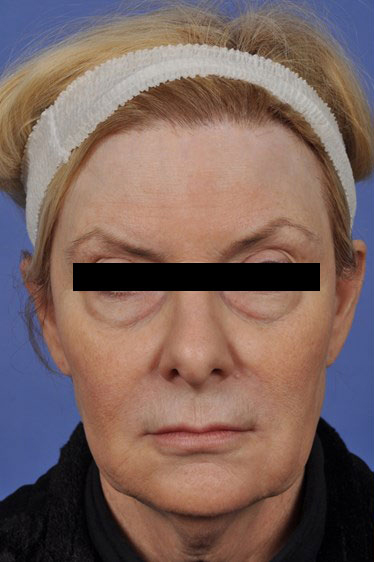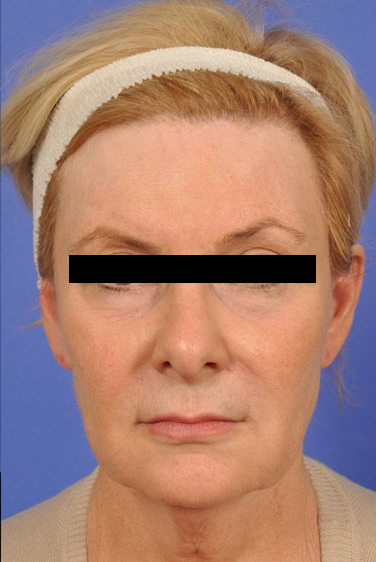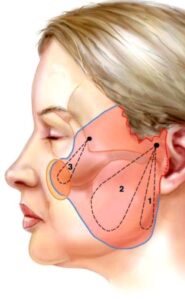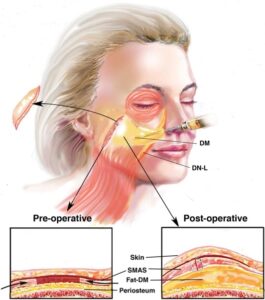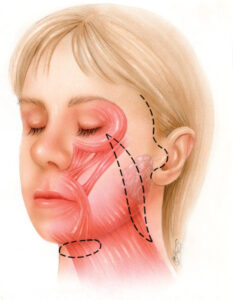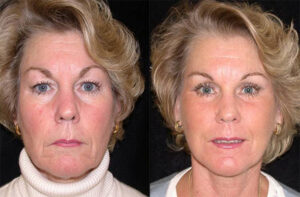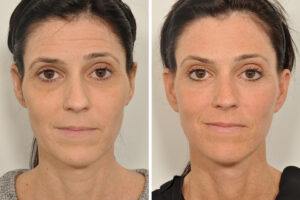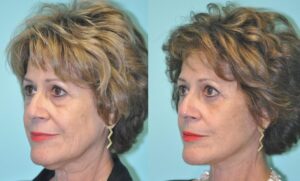Facelift and Necklift
A facelift is the surgical procedure that aims to tighten and lift the skin of the face and counteract the process of the ageing face. Similarly, a necklift tightens and lifts the skin of the neck. These procedures are often performed together.
The results of the facelift (or “rhytidectomy” procedure) are better if your facial skin still has some elasticity and your bone structure is still strong and well defined. Most people have this procedure are middle aged (40-60), but this doesn’t exclude older patients from it.
A successful facelift will make you look younger and have a positive impact on your psychology.
The facelift improves the lower half of the face. If you have droopy eyebrows and wrinkles on your forehead, your surgeon may suggest another procedure called a browlift.
Surgery
The facelift procedure involves raising and repositioning the skin and the fascia the face (known as “SMAS”). Your OMFS surgeon will cut the skin in a crease in front of the ear, extending up along the hairline. If a necklift is done at the same time, your surgeon may need to cut under the skin under the chin (about 1-2cm long).
After your surgeon raises the skin, he will tighten the fascia of the face (SMAS) or the muscle that drapes the neck (platysma) or both, using a technique called plication.
Tightening of the underlying fascia is paramount for a successful facelift/necklift procedure. Following that, the excess skin is removed and the wounds are sutured. A facelift bandage is then applied.
There are several modifications of the procedure; therefore surgery can be tailored to every patient’s individual needs.
The success of your procedure depends on many factors, and the technical execution is only one of them. You should avoid smoking, maintain a healthy diet and keep the wounds clean and dry to avoid infection.
It is important to remember that the facelift and the necklift wont change the texture of your skin; you may need to consider other treatments for it, such as laser resurfacing. Wrinkles on your forehead and around the eye require other treatments such as a browlift and/or Botox injections.
Possible complications
Like any other surgical procedure, facelift and necklift have potential risks. Your OMFS surgeon will discuss these risks prior to your surgery, so that you can make an informed decision, weighing the potential benefits of having the procedure versus the risks. The most common complications are:
- Scars (usually well hidden and barely visible)
- Bleeding
- Skin necrosis: This is more common in smokers and might require removal of part of the necrosed skin,
- Infection
- Swelling and bruising
- Asymmetry: This is uncommon and usually settles with time
- Earlobe numbness: The nerve that provides sensation to the earlobe (greater auricular nerve) can be bruised during the procedure, and this results in (usually temporary) numbness of the earlobe
- Damage to branches of the facial nerve: The facial nerve controls the normal movements of the muscles of the face. If any branches of the nerve are damaged, may not be able to lift your forehead or eyebrows, close your eyes tight, smile, puff up your cheek or you may notice droopiness on the angle of your mouth. This may be temporary or permanent.
Perioperative instructions
The facelift and/or the necklift are usually done under general anesthetic. However, they can also be done under local anesthetic with or without intravenous sedation.
The procedure takes around 3 hours.
After the procedure:
- You will be given an antibiotic ointment to keep the wound clean.
- You will be able to go home the same day
- You will be prescribed painkillers
- You will have a “facelift bandage” that stays in for seven days
- Try to keep your head raised (i.e. more pillows during sleep) to reduce the swelling
- Avoid straining or weight lifting for few weeks
- You can return to work after 2 weeks and expect full recovery usually within 4 weeks
The initial results will be obvious within 6 weeks, but the healing process and the final outcome might take up to 6 months to settle. Your surgeon will see you for follow up and take post-surgical photographs for your record.
